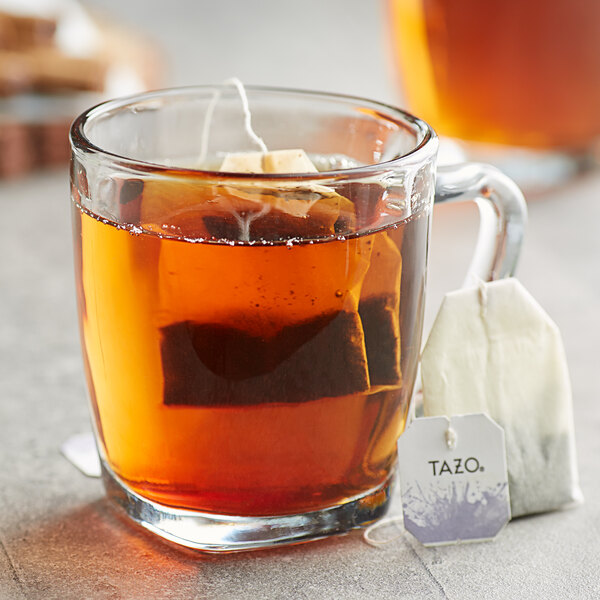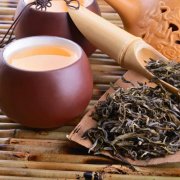Are all the top ten top teas made from one kind of tea tree? is black tea made from green tea?
Want to know more about how to use loose tea to make tea? You've come to the right place. We have created this convenient guide to help beginners learn the basics of tea and how to make tea. In this tutorial, you will learn everything from different types of tea to tea producing areas, and find out how to make the perfect tea each time. Read on to learn more about tea and why you should use them to make a cup of tea. Real tea is tea made from the leaves of tea trees, the scientific name of tea trees. In this category, there are five kinds of tea, including green tea, white tea, black tea, oolong tea and Pu'er tea. Although these teas are made from the leaves of the same plant, they offer a variety of flavors due to different processing methods. White tea and green tea taste more mild, with a hint of flowers, grass, freshness and earthy taste. These teas are harvested and dried by sun, steam or baking. They are considered to be the least processed, providing a light body and subtle taste. Oolong tea, black tea and Pu'er tea have stronger earthy, baking and rugged tastes. Oolong tea is partially oxidized tea, black tea and Pu'er tea are completely oxidized tea. They usually taste like nuts and chocolate or caramel. These teas contain more caffeine than green or white teas and are more suitable for brightly colored teas. Herbal tea herbal tea or anesthetic includes almost all other types of tea. They are made from flowers, stems, leaves and roots other than tea trees. The most popular herbal teas include mint tea, hibiscus tea and chamomile tea. These teas offer a variety of flavors, from the spicy taste of ginger tea to the sweet and seasonal taste of apple scented tea. Where does the tea come from? Tea is grown and harvested all over the world. Every continent plays an important role in tea production, although some countries dominate the industry. Generally speaking, China is the largest tea producer in the world. China produces more than 2 million tons of tea every year, accounting for about 30% of the world's total tea output. It mainly produces black tea, oolong tea, Pu'er tea and green tea (1). India is the world's second-largest tea producer, although nearly 70 per cent of its tea supply is still at home. India is one of the largest consumers of tea, with most of the tea grown in Darjeeling and Assam provinces. Masala chai is a spiced tea beverage made of black tea and spices. It is one of the most common beverages in China. Due to British colonial history and the existence of the East India Tea Company, the country offers teas ranging from traditional black tea to Earl Grey tea and English breakfast tea. The third largest tea producer is an interesting example. Kenya produces nearly 500000 tons of tea a year. What makes it unique is that most of the tea grown in Kenya is grown on small farms-usually less than an acre. By contrast, most of the tea in India and China comes from large producers that grow on a large scale. Due to the small scale of tea cultivation, farmers here can experiment with new varieties and are at the forefront of new industrial trends and technologies.

Japan produces most of the world's green tea, including the most popular matcha and fried tea. They are famous for the fresh, botanical and herbal flavor of green tea, which is made by steaming. Other countries such as Vietnam, Turkey, Indonesia and Iran also produce large amounts of tea. Sri Lanka, formerly known as Ceylon, produces popular Ceylon black tea, while South Africa is the only country that produces a kind of black tea called rooibos. In South America, most of the world's Madai tea is produced and cultivated using traditional techniques that have been used for centuries. Bulk tea vs. Tea bags can be brewed with loose tea or tea bags. Tea bags are convenient and easy to use, but they generally taste worse than loose tea. This is because the tea bag contains fragments of tea, which are called dust and fans. These teas are not as good for health as loose tea, nor do they have a real flavor, because they do not contain whole tea. If you want to use a tea bag because it is convenient, you can try using a small bag instead. These bags contain larger tea leaves, providing enough space for the leaves to swell and inject fragrance. When brewing a cup of delicious tea, high-quality tea will make everything different. Stick to loose tea or USDA organic tea, which tastes best and is good for your health. These teas usually contain whole teas, providing more nutrients and antioxidants, making tea a healthy drink.
Important Notice :
前街咖啡 FrontStreet Coffee has moved to new addredd:
FrontStreet Coffee Address: 315,Donghua East Road,GuangZhou
Tel:020 38364473
- Prev

The Origin and Development of English Black Tea drinking the Historical Story of English Black Tea caused by the War caused by Tea
The British fell in love with tea in the 17th century, when the British were introduced into England from China. At first, tea was just an upper-class thing, because it was expensive and not easy to buy. But by the 18th century, people from all walks of life in England were drinking tea, and drinking a lot. Of course, they have to import from China.
- Next

What kind of drinking tea is mainly the four major producing areas of loose leaf tea and how to brew the tea?
How to make tea it is easy to brew loose tea with suitable tools. All you need is a pan, teapot or similar container to heat hot water, high-quality tea and a filter. Here is a quick classification of how to make tea. Product description: add hot water to a pan or teapot. The appropriate temperature depends on the tea you brew.
Related
- The milk tea cup becomes smaller?! Overlord Tea Girl launches a new "Return to Yunnan" series
- Accused of selling counterfeit and high-priced coffee beans! Well-known boutique coffee brand "Oukelao" bowed and apologized!
- How to make espresso dumplings? Can I eat coffee and glutinous rice balls together?
- Save the unformed and stagnant powder cakes in one second! What is the problem with stagnant water in the powder bowl of the espresso machine?
- What does hand-brewed coffee stop mean? Why is it not recommended to make coffee by hand?
- Is it normal to smell like coffee? Why does coffee smell like alcohol? What's wrong with the strong smell of cold extract ice dripping ice brewed coffee?
- How to solve the problem that hand-brewed coffee extraction takes too long? Why is the water flowing so slowly when making coffee?
- The main points of making Australian white coffee, the proportion details, how does Australian white properly foam and blend the flowers?
- Can ice water make cold extract coffee? What is the difference between room temperature water and ice water for making cold coffee?
- What milk is best for making latte and white Dirty coffee? What is the difference between different brands of fresh milk and pure milk for making coffee?

